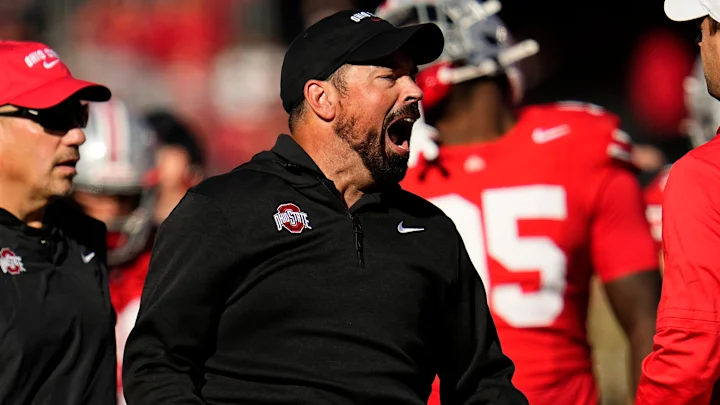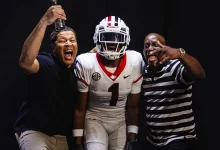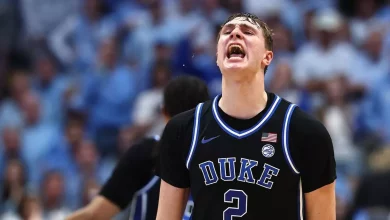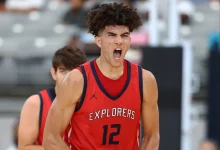Ohio State Buckeyes risk facing challenges from NIL policies again, as their current stance may leave them vulnerable to financial and competitive disadvantages in the evolving landscape of name, image, and likeness rights.

The Ohio State Buckeyes, renowned for their storied football program and a tradition of excellence on and off the field, now find themselves at a critical crossroads regarding the rapidly evolving landscape of Name, Image, and Likeness (NIL) policies. While the NCAA and various state legislatures have attempted to regulate NIL rights to ensure fairness and protect amateurism, the reality is that institutions like Ohio State face mounting challenges that could threaten their competitive edge and financial stability if their current stance remains unchanged. This comprehensive analysis explores the history and current state of NIL policies, Ohio State’s approach, potential vulnerabilities, and strategic considerations to navigate this complex terrain effectively.
The Rise of NIL Rights and Their Impact on College Sports
Over the past decade, college sports have experienced a seismic shift with the advent of NIL rights, allowing athletes to monetize their fame and personal brand. Originating from legal rulings like the 2021 NCAA Supreme Court decision in NCAA v. Alston and legislative acts such as California’s Fair Pay to Play Act, NIL has transformed from a peripheral issue into a central facet of college athletics. Athletes now have the legal right to earn money through endorsements, social media promotions, autograph signings, and various entrepreneurial endeavors, fundamentally altering the traditional amateur model.
This paradigm shift has led to significant financial opportunities for athletes, especially those in high-profile programs like Ohio State. However, it has also created disparities among programs and institutions, with some leveraging their geographic, media, and recruiting advantages to attract top talent. The landscape is further complicated by inconsistent state laws, NCAA policies, and enforcement mechanisms, leading to an environment marked by uncertainty and competition.
Ohio State’s Position on NIL and Its Historical Approach
As one of the most prominent programs in college football, Ohio State has historically maintained a cautious yet strategic stance on NIL. The university recognizes the importance of complying with legal frameworks and NCAA regulations while also safeguarding its brand integrity. Ohio State’s administration has emphasized education for athletes about NIL rights, establishing compliance offices, and advocating for clear, consistent policies at the national level.
The Buckeyes’ approach includes facilitating athlete-led NIL activities within regulatory boundaries, partnering with reputable NIL agencies, and promoting athlete exposure through media and community engagement. This strategy aims to balance athlete opportunities with institutional integrity, ensuring that the university remains competitive without inviting regulatory scrutiny or jeopardizing its reputation.
Despite these efforts, Ohio State’s current stance is primarily reactive rather than proactive. The institution has prioritized compliance and education but has not aggressively pursued NIL initiatives to capitalize on the potential financial gains or to establish a dominant NIL program. This cautious approach stems from concerns about maintaining amateur status, avoiding NCAA sanctions, and managing the complex legal landscape.
The Vulnerabilities of Ohio State’s Current NIL Stance
While Ohio State’s conservative approach offers certain protections, it also exposes the program to significant vulnerabilities that could have long-term implications:
Financial Disadvantages in Athlete Recruitment and Retention: As NIL rights become a key factor in recruiting, programs that actively promote and facilitate athlete NIL opportunities may attract more talent. Ohio State’s cautious stance could be perceived as a lack of support for athlete financial empowerment, discouraging top recruits who prioritize NIL potential. This gap can lead to losing high-caliber athletes to programs that offer more aggressive NIL support or connections.
Competitive Disadvantage: In the NIL arms race, programs that establish robust partnerships with NIL agencies, provide athlete branding resources, and promote NIL opportunities may gain a competitive edge. Ohio State’s reticence may hinder its ability to position itself as a leader in athlete NIL development, allowing rival programs to capitalize on the shifting landscape and attract the best talent.
Reputational Risks and Athlete Dissatisfaction: Athletes who perceive their NIL potential as limited by institutional policies may become dissatisfied or disillusioned, impacting team cohesion and overall morale. If Ohio State does not adapt its NIL strategy, it risks reputational damage among current and prospective athletes.
Legal and Regulatory Challenges: As NIL policies continue to evolve and legal disputes arise, institutions that do not proactively engage with the landscape risk falling behind in compliance and enforcement. Ohio State’s current stance may leave it unprepared for future regulatory changes, increasing the risk of sanctions or legal complications.
Missed Revenue Opportunities: Universities and athletic programs stand to benefit financially from NIL-driven partnerships, sponsorships, and licensing deals. Ohio State’s conservative approach may limit its ability to capitalize on these revenue streams, which could otherwise fund athletic programs, facility improvements, and academic initiatives.
The Broader Context: NIL Policies and Their Evolving Landscape
The NIL landscape remains highly dynamic, shaped by ongoing legislative efforts, NCAA policy developments, court rulings, and individual state laws. Some states, such as California and Florida, have implemented comprehensive NIL statutes that grant athletes broad rights and protections. Others, like Ohio, have adopted more cautious or restrictive measures, leading to a patchwork regulatory environment.
The NCAA’s initial reluctance to regulate NIL directly was challenged by legal rulings and state laws, prompting the organization to adopt interim policies and advocate for federal legislation. However, the lack of a cohesive national framework has resulted in inconsistent enforcement and confusion among institutions, athletes, and NIL agents.
In this context, institutions like Ohio State face the challenge of balancing compliance with legal requirements, protecting their reputation, and remaining competitive. The risk of being caught in regulatory gray areas, or of inadvertently violating rules due to differing state laws, underscores the importance of strategic planning.
Potential Strategies for Ohio State to Mitigate NIL Risks
To avoid being burned by an inflexible or outdated stance on NIL, Ohio State must consider adopting proactive, innovative strategies:
Developing a Comprehensive NIL Program: Establish a dedicated NIL office that provides athlete education, legal guidance, and partnership facilitation. This office can help athletes maximize NIL opportunities while ensuring compliance.
Building Strategic Partnerships: Collaborate with reputable NIL agencies, local businesses, and national brands to create mutually beneficial endorsement opportunities for athletes.
Enhancing Athlete Branding and Media Support: Invest in media training and branding resources to help athletes cultivate their personal brands, increase their marketability, and attract NIL deals.
Advocating for Clearer Regulations: Work with other institutions and NCAA leadership to develop standardized, transparent NIL policies that protect athletes and programs alike.
Promoting a Culture of Fair Play and Integrity: Emphasize the importance of ethical NIL practices to avoid violations and preserve the integrity of college athletics.
Monitoring Legal and Policy Changes: Keep abreast of ongoing legislative developments at the state and federal levels to adapt policies swiftly and effectively.
Leveraging University Resources: Use Ohio State’s extensive alumni network, media platforms, and community connections to support athlete NIL endeavors.
The Potential Consequences of Inaction
Failure to adapt or develop a strategic NIL approach could lead Ohio State into several adverse scenarios:
Talent Drain: Athletes may choose programs with more aggressive NIL support, weakening Ohio State’s roster and competitiveness.
Financial Losses: Missed opportunities to generate NIL-related revenue could limit funding for athletic facilities, scholarships, and academic programs.
Reputational Damage: Perceptions of institutional indifference or inability to support athlete rights may harm Ohio State’s image among recruits, current athletes, and fans.
Increased Legal Risks: Non-compliance with evolving regulations could result in sanctions, fines, or other penalties that undermine the program’s stability.
Competitive Lag: As other programs adapt quickly and capitalize on NIL opportunities, Ohio State risks falling behind in the national landscape, affecting its ability to sustain its competitive dominance.
The Future of NIL and Ohio State’s Role
As NIL policies continue to develop, Ohio State has an opportunity—and arguably a responsibility—to position itself as a leader in athlete support and compliance. Embracing innovation, fostering athlete entrepreneurship, and advocating for clear regulations can help the university turn potential vulnerabilities into competitive advantages.
The evolving landscape also offers a chance for Ohio State to showcase its commitment to athlete welfare, academic excellence, and institutional integrity. By implementing comprehensive NIL strategies, the university can attract top talent, enhance its brand, and secure financial growth, ensuring its continued prominence in college athletics.
Ohio State Buckeyes’ current cautious stance on NIL policies, while rooted in a desire to protect its reputation and maintain compliance, may inadvertently leave the program exposed to significant financial and competitive risks. In an era where NIL rights are reshaping college sports, adaptability, strategic planning, and proactive engagement are essential. The university must recognize the importance of developing a comprehensive, athlete-centered NIL approach that balances opportunity with integrity. Failing to do so could see Ohio State falling behind its rivals, losing top recruits, and missing out on lucrative revenue streams, ultimately threatening its storied legacy and future success. Embracing change, fostering innovation, and advocating for clearer policies will be critical steps in ensuring Ohio State remains a powerhouse both on and off the field in the NIL era.









